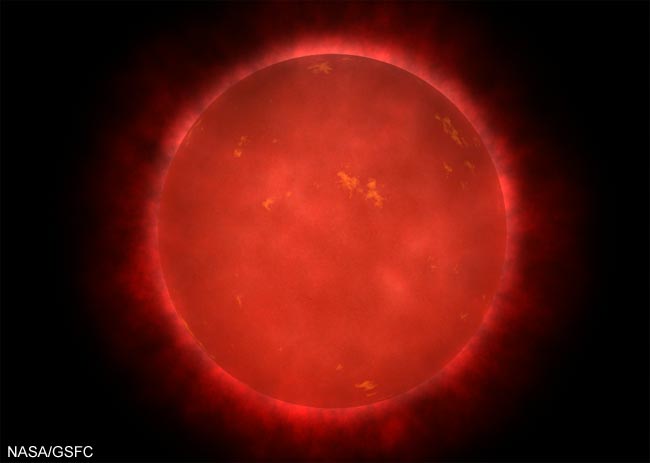Neptune-Size Planet Orbiting Common Star Hints at Many More

Astronomers have discovered a planet about as massive as Neptune orbiting one of the most common types of stars in the universe.
The star is a red dwarf, a class of star about 50 times fainter than the Sun. Among the 100 stars closest to us, 80 are red dwarfs. But astronomers had so far found only two planets in searches of about 200 red dwarfs, while well more than a hundred planets have been found around other types of stars.
"Our finding possibly means that planets are rather frequent around the smallest stars," says Xavier Delfosse, from the Laboratoire d'Astrophysique de Grenoble in France and co-author of the paper relating the work. "It certainly tells us that red dwarfs are ideal targets for the search for exoplanets."
Better technology
The star, catalogued as Gl 581, is located 20.5 light-years away in the Libra constellation. It is about one-third as massive as our Sun.
"Previous surveys may have missed many planets due to their insufficient precision," says Stephane Udry, from the Geneva Observatory and co-author of the work.
The planet was found using the HARPS instrument on the European Southern Observatory's 3.6-meter telescope at La Silla, Chile.
Get the Space.com Newsletter
Breaking space news, the latest updates on rocket launches, skywatching events and more!
The planet is about 17 times the Earth's mass and is one of the smallest ever found. It orbits close to its host star, completing a full circle in only 5.4 days at an average distance of about 3.7 million miles (6 million kilometers). By comparison, Mercury, the closest planet to the Sun, is at a distance of 35 million miles (58 million kilometers) and completes an orbit in 88 days.
Even though the star is dim, the planet's proximity to it means its surface is probably about 300 degrees Fahrenheit (150 Celsius), the researchers said.
Not the smallest
The planet was revealed by the gravitational wobble it induces on the host star, so no conventional picture was taken. The results were published in the journal Astronomy and Astrophysics.
The smallest known planet orbiting a normal star other than our Sun is about 7.5 times as massive as Earth. Planets about the same mass as Earth have been found around dying stars called pulsars.
Planets the size of Earth around normal stars will likely be detected with improved technology and future space missions, astronomers say. One theorist estimates there are 30 billion Earth-sized planets out there.
- 'Super Earth' Discovered at Nearby Star
- Astronomers Claim Potential Mini Solar System
- Two Neptune-Mass Planets Found
- Youngest Planet
- Oldest Planet
- Hottest Planet
- Farthest Planet
Join our Space Forums to keep talking space on the latest missions, night sky and more! And if you have a news tip, correction or comment, let us know at: community@space.com.

Rob has been producing internet content since the mid-1990s. He was a writer, editor and Director of Site Operations at Space.com starting in 1999. He served as Managing Editor of LiveScience since its launch in 2004. He then oversaw news operations for the Space.com's then-parent company TechMediaNetwork's growing suite of technology, science and business news sites. Prior to joining the company, Rob was an editor at The Star-Ledger in New Jersey. He has a journalism degree from Humboldt State University in California, is an author and also writes for Medium.









